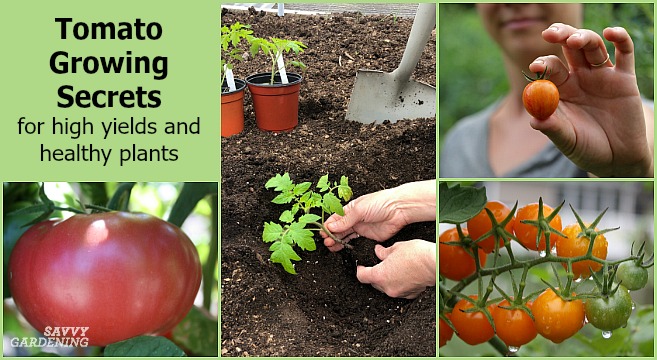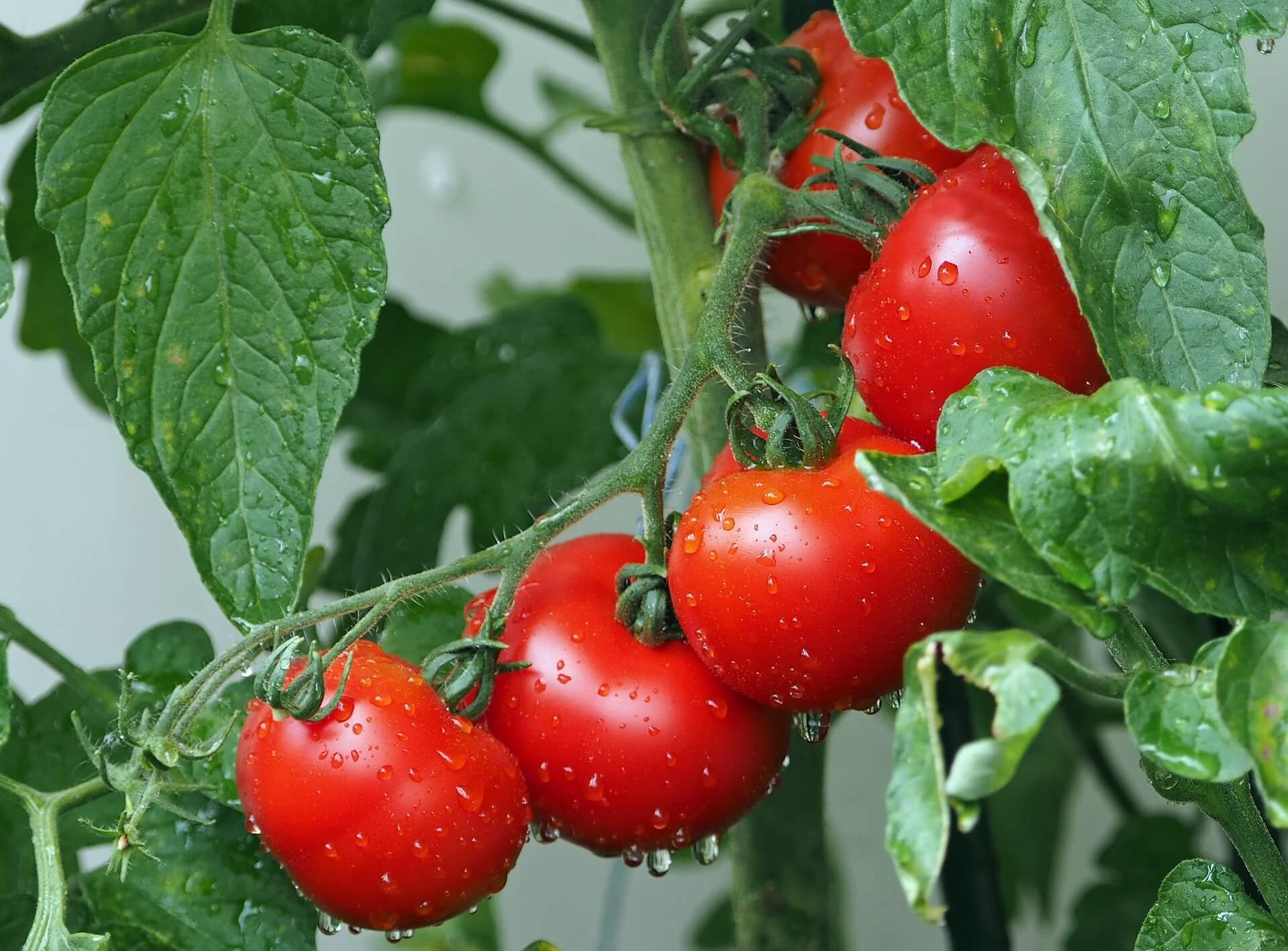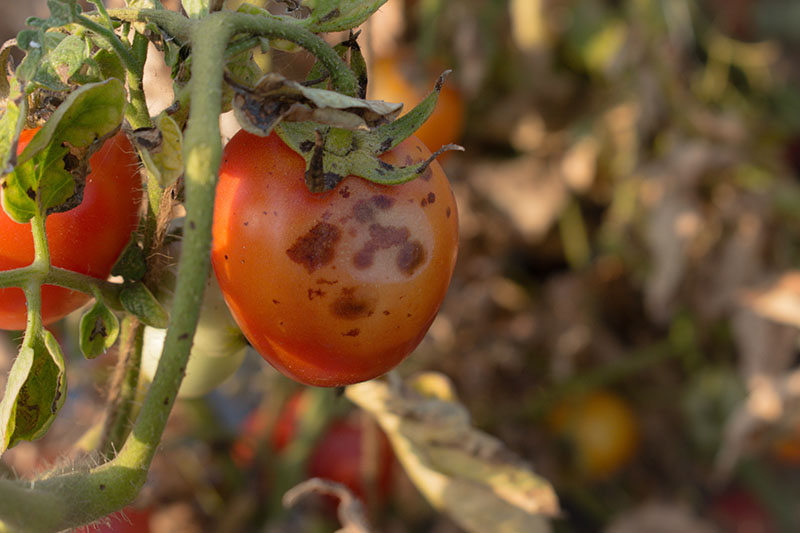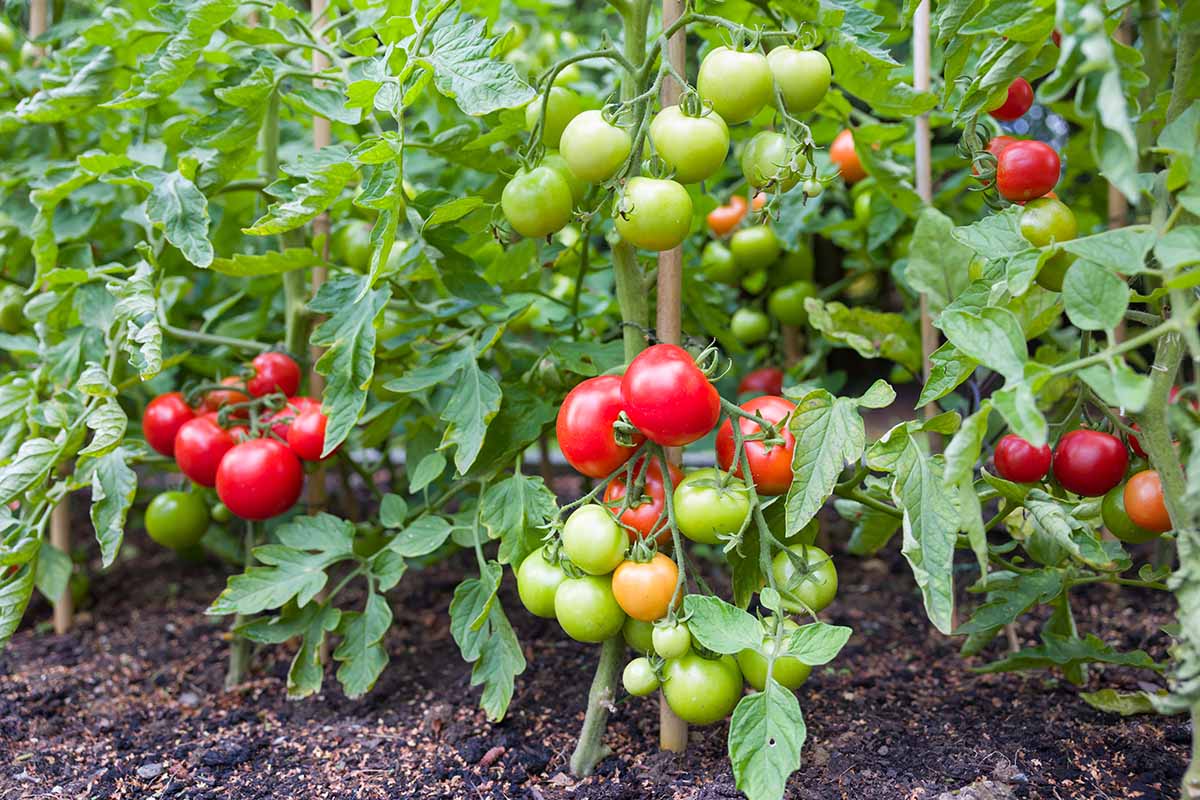Nourishing the Soil for Optimal Growth
Soil quality plays a vital role in the growth and development of tomato plants. A well-balanced soil with the right pH levels, nutrient-rich fertilizers, and organic matter can significantly impact the health and productivity of tomato plants. To create an optimal growing environment, it’s essential to understand the importance of soil quality and how to test and amend it for maximum growth.
Tomato plants thrive in slightly acidic to neutral soil with a pH range of 6.0 to 7.0. Soil with a pH level outside this range can lead to nutrient deficiencies and reduced growth. To determine the pH level of your soil, you can purchase a soil testing kit or send a sample to a laboratory for analysis.
In addition to pH levels, tomato plants require a balanced diet of nutrients to grow and produce fruit. Nitrogen, phosphorus, and potassium are the primary macronutrients essential for tomato plant growth. Nitrogen promotes leaf growth, phosphorus supports root development, and potassium helps with overall plant health. You can use a balanced fertilizer that contains these macronutrients to provide your tomato plants with the necessary nutrients for optimal growth.
Organic matter is another crucial component of a healthy soil ecosystem. Adding compost or well-rotted manure to the soil can improve its structure, increase the water-holding capacity, and provide beneficial microbes that help to break down nutrients. This, in turn, can help to create a thriving environment for tomato plants to grow.
By understanding the importance of soil quality and taking steps to test and amend it, you can create an optimal growing environment for your tomato plants. This, combined with other essential factors such as providing the right environment, choosing the best variety, and managing pests and diseases, can help to unlock the secrets to thriving tomato plants and a bountiful harvest.
What helps tomato plants grow is a combination of these factors, and by focusing on soil quality, you can set the foundation for a healthy and productive tomato plant. By incorporating these tips into your gardening routine, you can help to create an environment that promotes optimal growth and fruit production, and answers the question of what helps tomato plants grow.
Providing the Right Environment for Tomatoes to Flourish
Creating a supportive microclimate is crucial for tomato plants to thrive. Temperature, sunlight, and watering requirements are essential factors to consider when providing the right environment for tomatoes to flourish. By understanding these factors, you can create an optimal growing environment that promotes healthy growth and fruit production.
Temperature plays a significant role in tomato plant growth. Tomatoes thrive in temperatures between 65°F and 70°F (18°C and 21°C) during the day and above 55°F (13°C) at night. Avoid exposing tomato plants to extreme temperatures, as this can lead to stress and reduced growth.
Sunlight is another critical factor for tomato plant growth. Tomatoes require at least six hours of direct sunlight per day to produce well. However, in warmer climates, it’s essential to provide some shade, especially during the hottest part of the day, to prevent scorching.
Watering requirements are also crucial for tomato plant growth. Tomatoes need consistent moisture, especially when fruiting. Aim to provide about 1-2 inches of water per week, either through rainfall or irrigation. Avoid overwatering, as this can lead to disease and root rot.
In addition to these factors, wind protection and air circulation are also essential for healthy tomato plant growth. Wind can damage plants and reduce fruit production, while poor air circulation can lead to disease. Consider using row covers or windbreaks to protect your plants, and ensure good air circulation by providing enough space between plants.
By providing the right environment for tomatoes to flourish, you can help to create an optimal growing environment that promotes healthy growth and fruit production. This, combined with other essential factors such as nourishing the soil, choosing the best variety, and managing pests and diseases, can help to unlock the secrets to thriving tomato plants and a bountiful harvest.
What helps tomato plants grow is a combination of these factors, and by focusing on providing the right environment, you can help to create an environment that promotes optimal growth and fruit production.
How to Choose the Best Tomato Varieties for Your Garden
With hundreds of tomato varieties to choose from, selecting the best one for your garden can be a daunting task. However, by understanding the differences between various tomato varieties, you can make an informed decision that suits your specific growing conditions and desired outcomes. What helps tomato plants grow is not just the right environment and soil, but also the right variety.
Tomato varieties can be broadly classified into three categories: determinate, indeterminate, and semi-determinate. Determinate varieties are bush-type plants that grow to a certain height and then stop. They are ideal for small gardens, containers, and for those who want to harvest tomatoes all at once. Indeterminate varieties, on the other hand, are vining plants that will continue to grow and produce fruit throughout the season. They are ideal for larger gardens and for those who want a continuous harvest. Semi-determinate varieties are a combination of both and offer a balance between the two.
When choosing a tomato variety, consider factors such as climate, soil type, and desired fruit characteristics. For example, if you live in a hot and dry climate, you may want to choose a variety that is heat-tolerant and drought-resistant. If you have poor soil, you may want to choose a variety that is more disease-resistant. If you want to harvest tomatoes for slicing, you may want to choose a variety that produces large, meaty fruits.
Some popular tomato varieties for beginners include ‘Better Boy’, ‘Early Girl’, and ‘Patio’. These varieties are easy to grow, produce high yields, and are disease-resistant. For more experienced gardeners, varieties like ‘Brandywine’, ‘Cherokee Purple’, and ‘San Marzano’ offer unique flavor profiles and textures.
Ultimately, the best tomato variety for your garden will depend on your specific needs and preferences. By considering factors such as climate, soil type, and desired fruit characteristics, you can choose a variety that will thrive in your garden and provide you with a bountiful harvest.
By choosing the right tomato variety, you can help to create an optimal growing environment that promotes healthy growth and fruit production. This, combined with other essential factors such as nourishing the soil, providing the right environment, and managing pests and diseases, can help to unlock the secrets to thriving tomato plants and a bountiful harvest.
The Power of Companion Planting for Tomato Success
Companion planting is a simple yet effective way to promote healthy growth and fruit production in tomato plants. By growing certain plants alongside tomatoes, you can create a beneficial microclimate that enhances growth, reduces pests and diseases, and increases yields. What helps tomato plants grow is not just the right environment and soil, but also the right companion plants.
Some of the best companion plants for tomatoes include basil, mint, and oregano. These herbs repel pests such as whiteflies and aphids, and also add flavor to tomato dishes. Other beneficial companion plants include marigolds, which repel nematodes, and nasturtiums, which repel aphids and other pests.
Companion planting can also help to improve soil health and fertility. For example, legumes such as beans and peas fix nitrogen in the soil, which benefits tomato plants. Other plants such as comfrey and borage act as fertilizer plants, adding nutrients to the soil that benefit tomato plants.
In addition to pest control and soil fertility, companion planting can also help to promote growth and fruit production in tomato plants. For example, plants such as dill and parsley can help to improve air circulation and reduce fungal diseases. Other plants such as chives and garlic can help to repel aphids and other pests, reducing the need for pesticides.
When companion planting with tomatoes, it’s essential to choose plants that have similar growing conditions and requirements. For example, plants that require full sun and well-draining soil are ideal companions for tomatoes. Avoid planting tomatoes with members of the Brassica family, such as broccoli and cauliflower, as these plants can compete with tomatoes for water and nutrients.
By incorporating companion planting into your tomato growing strategy, you can create a healthy and productive growing environment that promotes optimal growth and fruit production. This, combined with other essential factors such as nourishing the soil, providing the right environment, and managing pests and diseases, can help to unlock the secrets to thriving tomato plants and a bountiful harvest.
Supporting Tomato Plants with Cages, Trellises, and Pruning
Indeterminate tomato plants require structural support to grow and produce fruit optimally. Without support, these plants can become leggy and prone to disease, reducing fruit production and overall plant health. What helps tomato plants grow is providing the right support, and this is where cages, trellises, and pruning come in.
Cages are a popular support option for indeterminate tomato plants. They provide a sturdy framework for the plant to grow around, keeping it upright and promoting even fruiting. When using cages, make sure to place them around the plant at planting time, and gently twine the stems around the cage as the plant grows.
Trellises are another support option for indeterminate tomato plants. They provide a vertical framework for the plant to grow up, making the most of space and promoting air circulation. When using trellises, make sure to train the plant to grow up the trellis by gently twining the stems around the support.
Pruning is also an essential part of supporting indeterminate tomato plants. Pruning helps to promote healthy growth, increase fruit production, and reduce disease. When pruning, remove any weak or spindly growth, and trim back the tips of the stems to encourage branching.
When pruning tomato plants, it’s essential to make clean cuts just above a leaf node. This helps to promote healthy growth and reduce the risk of disease. It’s also important to prune tomato plants regularly, as this helps to maintain their shape and promote optimal fruit production.
By providing the right support for indeterminate tomato plants, you can help to promote healthy growth, increase fruit production, and reduce disease. This, combined with other essential factors such as nourishing the soil, providing the right environment, and managing pests and diseases, can help to unlock the secrets to thriving tomato plants and a bountiful harvest.
Remember, what helps tomato plants grow is a combination of the right support, environment, and care. By providing the right support, you can help to promote optimal growth and fruit production, and enjoy a bountiful harvest of delicious homegrown tomatoes.
Managing Pests and Diseases for Healthy Tomato Plants
Tomato plants are susceptible to a variety of pests and diseases that can significantly impact their growth and productivity. What helps tomato plants grow is not just the right environment and care, but also effective pest and disease management. By understanding the common pests and diseases that can affect tomato plants, you can take steps to prevent and control them, ensuring a healthy and productive harvest.
Common pests that can affect tomato plants include hornworms, aphids, and whiteflies. Hornworms are large, green caterpillars that can cause significant damage to tomato plants. Aphids are small, soft-bodied insects that can transmit plant viruses and reduce plant growth. Whiteflies are small, winged insects that can transmit diseases and reduce plant growth.
To manage pests, use integrated pest management (IPM) strategies that combine physical, cultural, biological, and chemical controls. Physical controls include hand-picking pests, using row covers, and installing fine-mesh screens. Cultural controls include practicing good sanitation, removing weeds, and avoiding overwatering. Biological controls include introducing beneficial insects, such as lady beetles and lacewings, that prey on pests. Chemical controls include using insecticidal soap, neem oil, and pyrethrin sprays.
Common diseases that can affect tomato plants include fungal infections, bacterial spot, and tobacco mosaic virus. Fungal infections, such as septoria leaf spot and early blight, can cause yellowing or browning of leaves and reduced plant growth. Bacterial spot is a bacterial disease that can cause small, dark spots on leaves and reduced plant growth. Tobacco mosaic virus is a viral disease that can cause yellowing or browning of leaves and reduced plant growth.
To manage diseases, use cultural controls such as practicing good sanitation, removing weeds, and avoiding overwatering. Biological controls include introducing beneficial microorganisms, such as Trichoderma harzianum, that can help to control fungal diseases. Chemical controls include using fungicides, such as copper-based products, and bactericides, such as copper-based products.
By managing pests and diseases effectively, you can help to promote healthy growth and productivity in your tomato plants. This, combined with other essential factors such as nourishing the soil, providing the right environment, and supporting the plants, can help to unlock the secrets to thriving tomato plants and a bountiful harvest.
Feeding Your Tomato Plants for Maximum Yield
Fertilizing tomato plants is essential for optimal growth and fruit production. What helps tomato plants grow is a balanced fertilizer schedule that provides the necessary nutrients for healthy growth and development. Tomato plants require a diet rich in nitrogen, phosphorus, and potassium to produce a bountiful harvest.
Nitrogen is essential for leaf growth and development, while phosphorus promotes root growth and fruiting. Potassium helps to regulate water balance and promotes overall plant health. A balanced fertilizer schedule should include a mix of these three nutrients, as well as other micronutrients such as calcium, magnesium, and sulfur.
When creating a fertilizer schedule, consider the specific needs of your tomato plants. For example, seedlings require a higher nitrogen content to promote leaf growth, while fruiting plants require a higher phosphorus content to promote fruit production. Soil type and pH also play a role in determining the best fertilizer schedule for your tomato plants.
Organic fertilizers such as compost, manure, and fish emulsion are excellent options for tomato plants. These fertilizers release nutrients slowly, promoting healthy growth and development. Inorganic fertilizers such as ammonium nitrate and diammonium phosphate can also be used, but they should be applied with caution to avoid burning the roots.
Timing is also crucial when fertilizing tomato plants. Fertilize seedlings when they are 1-2 weeks old, and again when they are 4-6 weeks old. For fruiting plants, fertilize when the first flowers appear, and again when the fruit is about 1 inch in diameter.
By providing your tomato plants with a balanced fertilizer schedule, you can promote healthy growth and development, and ensure a bountiful harvest. This, combined with other essential factors such as nourishing the soil, providing the right environment, and supporting the plants, can help to unlock the secrets to thriving tomato plants and a bountiful harvest.
Remember, what helps tomato plants grow is a combination of the right fertilizer schedule, environment, and care. By providing your tomato plants with the necessary nutrients, you can promote optimal growth and fruit production, and enjoy a bountiful harvest of delicious homegrown tomatoes.
Monitoring and Adjusting for Optimal Tomato Plant Growth
Regular monitoring and adjustment are crucial for optimal tomato plant growth. What helps tomato plants grow is not just the right environment and care, but also regular monitoring and adjustment to ensure that the plants are receiving the necessary nutrients, water, and support. By monitoring and adjusting, you can identify potential issues before they become major problems, and make adjustments to ensure a bountiful harvest.
One of the most important things to monitor is the soil moisture levels. Tomato plants require consistent moisture, especially when fruiting. Check the soil daily, and water when the top 2-3 inches of soil feel dry to the touch. Avoid overwatering, as this can lead to disease and root rot.
Another important thing to monitor is the plant’s nutrient levels. Tomato plants require a balanced diet of nutrients to produce fruit. Check the plant’s leaves for signs of nutrient deficiency, such as yellowing or browning. Adjust the fertilizer schedule as needed to ensure that the plant is receiving the necessary nutrients.
Support is also crucial for indeterminate tomato plants. Monitor the plant’s growth, and provide support as needed. Use cages, trellises, or stakes to keep the plant upright and promote even fruiting.
Pest and disease management is also critical. Monitor the plant regularly for signs of pests or diseases, and take action promptly if you notice any issues. Use integrated pest management strategies and organic control methods to minimize the use of chemical pesticides and fungicides.
Finally, monitor the plant’s progress, and make adjustments as needed to ensure optimal growth and fruit production. Keep a gardening journal to track the plant’s progress, and make notes on any issues that arise. By monitoring and adjusting, you can ensure a bountiful harvest of delicious homegrown tomatoes.
By following these tips, you can ensure that your tomato plants receive the necessary care and support to thrive. What helps tomato plants grow is a combination of the right environment, care, and monitoring. By providing your tomato plants with the necessary care and support, you can enjoy a bountiful harvest of delicious homegrown tomatoes.







:max_bytes(150000):strip_icc()/tips-for-growing-tomatoes-in-containers-848216-01-bc0c62366c3b448f9b1f6cd0436a8270.jpg)
